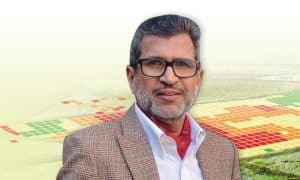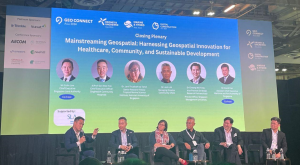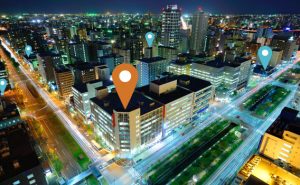Location technology is at the heart of keeping us moving in today’s digital era, driving transformation in business processes and workflows. Jason Jameson, SVP and General Manager, APAC, at HERE Technologies, speaks about the latest trends and potential of Location Intelligence across various industries in this interview with Geospatial World.
Today, we can see location and geospatial technologies are at the core of digital transformation. How far will this trend go and how significant is it to our industry?
This is definitely the macro trend. We’ve gone from location data, which tells us where things are, to spatial intelligence, which helps us make sense of how things are interacting with one another in the environment that they are in. The whole idea of digital transformation is really about being able to do things and react to things in real-time. It sounds futuristic but we’re already in the early stage of that journey.
One great example from Europe is Mercedes-Benz, which deploys our HD Live Map for DRIVE PILOT — their Level 3 automated driving system — designed to operate a vehicle under certain conditions in Germany. Examples like this demonstrate the importance of spatial intelligence, and how high-definition maps make everything much more granular, to understand exactly where you are and to react in real-time.
The future will be all about how we can ingest and process information in real-time. Artificial intelligence (AI) will become very important because there aren’t enough data scientists in the world to process all this data that’s being generated; AI has to help us understand that data at scale.
Companies are now looking to improve visibility of their supply chain across multi-modal transportation. This is where we will see ongoing transformation in the transportation and logistics business processes and workflows.
How do you think location is transforming business processes and workflows?
Speaking about transformation, one industry that has been completely transformed during the pandemic is the supply chain industry. We’ve seen serious constraints and bottlenecks as the system gets pushed. We’ve also found that end-to-end visibility is fairly weak in this industry. Companies are now looking to improve visibility of their supply chain across multi-modal transportation. This is where we will see ongoing transformation in the transportation and logistics business processes and workflows.
To give an example, we’re working with Siemens Healthineers to track and monitor the location, condition and ETA (expected time of arrival) of their medical equipment shipments in real-time. Hospitals need to know where these devices are in the chain so they can plan medical procedures more efficiently.
Real-time visibility allows better prediction around ETAs and that improves customer service. Businesses can predict when things are going to happen and more proactively notify customers in case of delays. This enables customers to make better decisions in real-time as well.
We’re also working with Tata Consultancy Services (TCS) to bring real-time location-based services and analytics to its IoT-enabled SaaS suite, TCS DigiFleet™. It brings together IoT, AI and machine learning to address global logistics, providing end-to-end supply chain visibility via up-to-date map visualization, along with historic and real-time route optimization.
Moreover, robust geocoding allows end-to-end supply chain visibility, especially in last mile delivery. It simply optimizes everything.
What are the new trends in connected devices that can transform urban mobility?
The car is a good example of a connected device these days. Many automotive companies are looking to commercialize vehicle- derived data, and to use it to provide value-added services back to customers.
Take Electric Vehicles (EVs) as an example. Drivers need to be able to know where the nearest charging station is, and even its status in real-time — whether it’s broken or occupied — and that allows for better route planning.
VinFast, a car manufacturer in Vietnam, will deploy our one-stop navigation application in its first three smart electric cars. Since the EV infrastructure is not as fully built in Vietnam as it is in Europe, getting that visibility will help make the adoption of EV a reality.
Connected devices are also very important for autonomous driving. For instance, having spatial intelligence through vehicle-to-vehicle communications can help avoid traffic hazards.
Another key area of connected devices and urban mobility is ride sharing. Drivers’ mobile phones are used to connect, plan routes, accept bookings, etc. For instance, HERE works with Lyft in the United States, providing a search database for places and addresses with improved accuracy.
How do you see autonomous driving progressing in APAC?
In APAC, there are different levels of maturity and readiness. According to the KPMG 2020 Autonomous Vehicles Readiness Index, Singapore is ranked number one in terms of autonomous vehicle readiness. It had a lot to do with acceptance by the public, and policy and legislative efforts to encourage its use. South Korea is also quite advanced, where they have improved their regulations around self-driving cars. Australia, Japan and China are also going a long way down this path as well.
India, on the other hand, is a huge market for automotive and has huge potential for ADAS (Advanced Driver-Assistance Systems) but there are issues with infrastructure and there’s no legal framework yet. Autonomous driving has dependencies on other infrastructure such as high-speed internet connectivity and complete mapping across the country down to the smallest classes of roads, which is not yet available in India.
Tell us more about HERE’s convergence of content, software, and services as a business model.
On top of the map content, HERE provides additional value-added services such as tracking, content like EV charging locations, and more. We provide over 800 attributes on our maps, which is industry leading. The idea is to have our content, software, services and all the foundational elements in an open, secure platform with products by design. Having all the tools and the ability to ingest all the data one needs in one place allows our customers to build applications, innovate and create value.
As such, location technology is the common thread that ties together data and insights across various industries to drive digital transformation. By adding a location element to the data that we have, we will be able to create a digital representation of reality and leverage deeper insights to improve the movement of goods and people.









